| Article ID | Journal | Published Year | Pages | File Type |
|---|---|---|---|---|
| 4270040 | The Journal of Sexual Medicine | 2014 | 9 Pages |
IntroductionDespite estimates of a high prevalence of deep dyspareunia (DD) among women in the United States, risk factors for this important area of sexual dysfunction have been largely understudied.AimsThe purpose of this study was to examine the relationship between uterine fibroids and the prevalence of DD.MethodsWe used data from the Uterine Fibroid Study (enrollment 1996–1999 in a U.S. metropolitan area). Participating women were ages 35–49 and were randomly selected from the membership rolls of a prepaid health plan. Women were asked to provide detailed health information including a symptom questionnaire with questions about DD and to have a study ultrasound to screen for fibroids ≥0.5 cm in diameter. The analysis included 827 women, after restriction to participants who were premenopausal with an intact uterus, sexually active, completed the symptom questionnaire, and had fibroid status adequately assessed. Logistic regression was conducted to estimate the adjusted prevalence odds ratio (aPOR) for the association of DD with presence of fibroids after adjusting for age, ethnicity, education, depression, physical activity, parity, and pelvic pathology.Main Outcome MeasureOur main outcome measures were the presence and severity of DD.ResultsThe presence of fibroids was significantly associated with DD (aPOR = 1.7 95% confidence interval [CI] 1.1, 2.5). The aPOR was stronger for severe DD, DD that interfered with normal activity “some” or “a lot” (aPOR = 3.1 95% CI 1.2, 8.2). However, there was not a significant dose response relationship between fibroid burden (measured by uterine volume) and DD. Fundal fibroids were more strongly associated with DD than other fibroids. Additional factors associated with significantly elevated odds of DD were parity, depression, younger age, and pelvic pathology.ConclusionOur results suggest that fibroids are associated with DD. The association may not be causal but may reflect shared etiology and/or pathologic pathways. Moshesh M, Olshan AF, Saldana T, and Baird D. Examining the relationship between uterine fibroids and dyspareunia among premenopausal women in the US. J Sex Med 2014;11:800–808.
